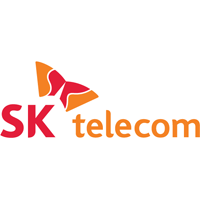
You won't find too many people arguing that Long Term Evolution, WiMAX or 4G in general is a bad thing, long term. You can find lots of people who might say the timing of the investment is an issue, that the danger of overpaying to acquire spectrum is an issue, or that protocol decisions carry some risk.
One hears less talk about the impact on voice services as lower-latency mobile broadband services are introduced. One advantage LTE offers application providers and access providers is much better latency performance, which means better real-time services performance. That means better voice and video.
But that lower latency is better for all providers of real-time services, not just the mobile broadband provider.
"Because LTE is all-IP and offers lower latency, it puts mobile calling services from OTT providers like Skype on more equal footing with existing carrier wireless voice services," says Tole Hart, Yankee Group senior analyst.
In other words, though LTE is strategic for mobile service providers, it also means a better platform for over-the-top application providers who have services requiring good latency performance.
Yankee Group forecasts smart phone penetration reaching 50 percent by the end of 2011 and 70 percent by 2013, meaning there will be more customers using their smart phones to download alternative calling apps from application providers like Skype, Vonage and Google Voice, and possibly from social communities like Facebook in the future.
The standard "advice" for mobile service providers is to enhance the value of their captive voice services. It's good advice, though strategically problematic, since the application providers will continue to enhance the value of their own services as well.
Obviously, at stake for carriers is a portion of the approximately $730.4 billion in global mobile voice service revenue. But there also will be danger from application providers who bundle text messaging with their voice services, as well.
Text messaging generates about $74.7 billion worth of revenue, and very-high profit margins.
Mobile service providers have important advantages in terms of creating bundles of services that will tend to keep customers "glued" to a basket of features including voice, text messaging and broadband access. That would be a simple adoption of the fixed-line "triple play" strategy, where the incremental cost of any one service is relatively low, in a package of three or four services.
Of course, in some markets mobile service providers might also be able to apply native quality of service mechanisms that provide meaningful experience advantages for end users, and are not available to other application providers. In other cases mobile service providers might want to sell those capabilities to third-party voice providers as a revenue-generating product.
The point is that there is no simple, fool-proof way to "firewall" a mobile voice service from more-effective application provider competition once an LTE network is in place. Bundles and quality assurance are likely to be important weapons, though.












